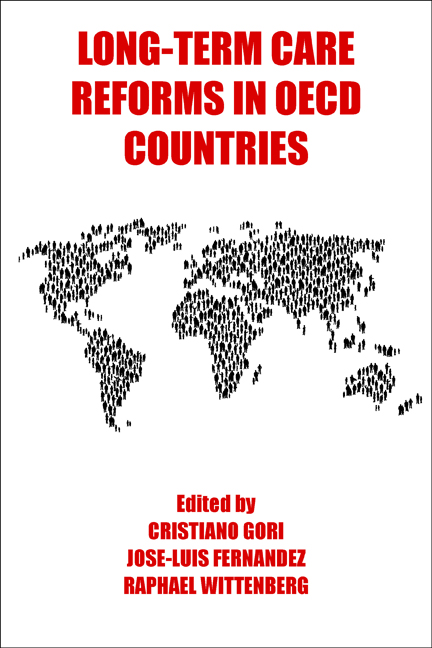Two - Demand for care and support for older people
Published online by Cambridge University Press: 19 August 2022
Summary
Introduction
This chapter considers the drivers of demand for care and support for older people and trends in those drivers in developed countries. It concentrates especially on trends in disability, as the key indicator of need for care and support, and trends in household composition, as an indicator of the availability of unpaid care by family members. This chapter sets the scene for discussions in later chapters.
Understanding the drivers of demand is crucial in the context of policy concerns about the future affordability of care and support for older people. Projections of likely future demand are required to ensure that policy decisions are based on evidence, and projections in turn require clarity about the factors that can be expected to have an impact on demand and the likely trends in those factors.
Care and support – often referred to as social care or long-term care (LTC) – aim to help people with personal care and domestic care tasks. The July 2012 White Paper on care and support in England, for example, defines social care as ‘care and support [which] enables people to do the everyday things that most of us take for granted: things like getting out of bed, dressed and into work; cooking meals; seeing friends; caring for our families; and being part of our communities’ (HM Government, 2012, p 13). The Organisation for Economic Co-operation and Development (OECD) has similarly defined long-term care as ‘a range of services required by persons with a reduced degree of functional capacity, physical or cognitive, and who are consequently dependent for an extended period of time on help with basic activities of daily living (ADL), such as bathing, dressing, eating, getting in and out of bed or chair, moving around and using the bathroom’ (OECD, 2011, p 14).
Unpaid carers, also referred to as informal carers, provide the majority of care and support for older people. These comprise in particular spouses/partners and adult children/children-in-law of the person needing care, but may include other relatives, friends or neighbours. Since unpaid carers provide so much care and support, relatively small changes in the availability of unpaid care may have relatively large impacts on demand for formal care services.
- Type
- Chapter
- Information
- Long-Term Care Reforms in OECD CountriesSuccesses and failures, pp. 9 - 24Publisher: Bristol University PressPrint publication year: 2015

